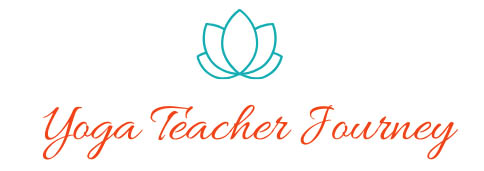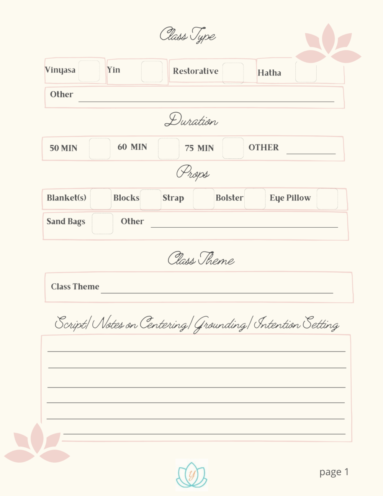How comfortable are you teaching Pranayama (breath control)? As a new teacher, my comfort level was somewhere around a two on a scale of one to ten. Not comfortable at all. But like anything else, with practice it became much more comfortable, as it will for you too. Here are a few tips on teaching breathing techniques to take your comfort level from zero to ten in no time!
When I started teaching on my own, I lacked confidence teaching all Pranayama. I had so much anxiety just thinking about leading students through breath control. Where do I fit it into my sequence? How do I begin? How do I cue students? These were all questions that entered my mind and that I’ll address in this post.
Before we go any further, let’s talk a little about WHY we teach Pranayama and what Pranayama is exactly.
The definition of Pranayama is breath control. Prana in Sanskrit means life force (which is breath); yama means control. Therefore, Pranayama is the control of the breath. Why do we want to control the breath? The simple answer is because by controlling the breath we can connect our mind with our body. But, of course there’s much more to it. Pranayama is the fourth limb of yoga in Patanjali’s eight-limbed path and considered to be the highest form of purification of the mind and body along with asana.
On a physical level, breathing is the exchange of air in the body. You are bringing in life nourishing oxygen and discarding carbon dioxide and toxins. Breathing happens in the body automatically, without giving any thought to it through our autonomous nervous system. But we have the power to consciously take control of the breathing process and to do so mindfully, creating patterns and rhythm to our breath.
Most of the time when breathing happens automatically and unconsciously, it is through the sympathetic nervous system. This is the fight-flight-freeze state that we find ourselves in most of the time and here breathing is fast and shallow. When we take control and create deep diaphragmatic breaths and rhythm, we stimulate our vagus nerve, and activate the parasympathetic nervous system, the rest and digest state. In this state, our body relaxes and feels safe, our heart rate slows, digestion improves, and the immune system functions optimally. This response lends itself to reducing stress and anxiety, boosting mood and improving sleep.
Now that we’ve discussed the “why” of Pranayama, we’ll move on to the “how.” There are four basic Pranayama practices that I’ll cover below:
| DIRGA | THREE-PART BREATHING |
| NADI SHODHANA | ALTERNATE NOSTRIL BREATHING |
| SAMA VRITTI | EQUAL BREATHING – without kumbhaka (holding) |
| SAMA VRITTI | EQUAL BREATHING – with kumbhaka (holding) |
DIRGA BREATH
In the early days of teaching, I most often gravitated to Dirga breath, three-part breathing, for a few reasons. It’s easy to cue students into in a reclined position (no one is looking at you), and it’s easy for them to follow and feel the immediate benefits of relaxation.
This Pranayama exercise works best at the very beginning or end of class when cueing into Savasana. When new to teaching, I recommend starting class with Dirga breath. Once you cue students into this breath control, tell them to continue breathing in this way on their own for a few more breaths. While they are focusing on directing their breath, you can deliver the centering or intention for the class. When you are finished, have them return to the natural rhythm of their breath. Begin by having students lower down onto their backs, begin noticing their breath, and then cue as follows:
- Place one hand on your chest – up near your collar bone, and one hand on your belly.
- Take a slow, deep inhale through your nose, completely filling your belly first, then the area of the ribs, then the chest up to your collar bone.
- Now exhale, slowly and completely, first from your chest, then the ribs, then the belly.
- Repeat: inhale belly, ribs, chest; exhale chest, ribs, belly.
NADI SHODHANA
Alternate nostril breathing is a wonderful Pranayama practice for creating balance in our brain and nervous system. In yoga philosophy, the right side of the brain is believed to be our masculine side which harnesses the sun (Ha), and the left side is feminine and harnesses the moon (Tha). (Hence the term Hatha yoga.)
Think back to your YTT and learning about the subtle energy systems in our bodies, the chakras and the nadis (72,000 of them), which carry prana throughout the entire body. The three main nadis (energy channels) are Ida (feminine), Pingala (masculine) – which crisscross through Shushumna, the central energy channel. Ida and Pingala have complementary qualities (yin and yang) which become balanced in this breathing technique.
This exercise can be practiced at the beginning of class in Sukasana (easy seat) or when you return to seated in the cool down period of the sequence. Have students take a seat and ground down in their sit bones and lengthen their spine.
First, you will want to introduce Nadi Shodhana and let students know what to expect. Demonstrate the Vishnu mudra which will be used to alternate closing off the left and right nostrils during the practice, typically with the right hand. Explain that they should take their peace fingers (pointer and middle) and fold them down towards their palm. Next, briefly demonstrate how the thumb and ring fingers will be used during the breathing to close off each nostril. Continue by telling students to close their eyes (or take a gentle downward gaze), begin noticing their breath, and then cue the students as follows.
- Take the Vishnu mudra with your right hand and place your thumb and ring fingers gently on your nose where the soft cartilage meets the bone (at the top of the nostrils). Inhale and exhale slowly through both nostrils
- Close off the right nostril
- Inhale through left nostril; close off the left
- Exhale through the right nostril
- Inhale through the right nostril; then close off the right
- Exhale through the left nostril
This concludes one full round of breath. Continue for at least six rounds of breath. When finished allow both hands to rest of your thighs.
A wonderful alternative to using the Vishnu mudra is to use visualization of alternating the breath through each nostril. In this version, students can allow both hands to rest on the top of their thighs as you cue them to inhale and exhale through each nostril using visualization only. I actually prefer this method since I feel it allows students to relax even more and makes this option a guided meditation of sorts.
SAMA VRITTI – WITHOUT holding (kumbhaka)
Equal breath, or Sama Vritti, is a calming breathing technique that allows students to relax, become centered, and activate the parasympathetic nervous system. The simpler form of this type of Pranayama is without holding (kumbhaka), where students are simply counting the length of each inhale to the count of 4 or 5 (whichever is more comfortable to them) and then matching it in length with the exhale. I like to teach this Pranayama practice during centering and intention setting for the ease of instruction, but it can be used anywhere in the practice. Everyone can follow this breath control exercise and it immediately centers students bringing awareness to their breath. It’s also a great way to ease into Savasana, allowing them to once again focus on their breath and draw awareness inside.
You have the option to start students in seated or a reclined position, and you can begin counting for them to follow along or allow them to count themselves from the beginning. If you participate in the counting, begin at a count of 4 and then give them the option to increase the length of each inhale and exhale if it feels right to them. If guiding them by counting out loud, cue them to continue counting on their own quietly to themselves when you stop. Ask students to gently close their eyes, begin noticing their breath, then cue as follows:
- Inhale to a count of 4 or 5
- Exhale to a count of 4 or 5
If guiding them to start:
- Inhale, 2, 3, 4
- Exhale, 2, 3, 4
Continue for at least six complete rounds of breath. Cue students to return to the natural rhythm of their breath.
SAMA VRITTI – WITH holding (kumbhaka)
This breath control is very similar to above but with a pause in breathing at the top of the inhale and at the bottom of the exhale. It is also referred to as box breathing because your inhale, pause, exhale, pause, are each held for the same count. This practice provides the same benefits as mentioned above, improving mental clarity and focus. I prefer to teach box breathing to students in an easy seated position, either at the start of class or when returning to seated during the cool-down portion of class. Just as above, you can guide them by counting aloud to start if you choose. Ask students to gently close their eyes, begin noticing their breath, then cue as follows:
- Inhale to a count of 4 or 5
- Hold for a count of 4 or 5
- Exhale to a count of 4 or 5
- Hold for a count of 4 or 5
If guiding them to start:
- Inhale, 2, 3, 4
- Hold 2, 3, 4
- Exhale, 2, 3, 4
- Hold 2, 3, 4
Continue for at least six complete rounds of breath. Cue students to return to the natural rhythm of their breath.
All of the Pranayama practices described above are simple yet powerful tools that can be taught in any level or type of class. Guiding students through these Pranayama exercises will reduce stress, improve focus, and leave them feeling centered and relaxed.
Additional Resources:
The Breathing Book by Donna Farhi
The Yoga of Breath: A Step-by-Step guide to Pranayama by Richard Rosen





